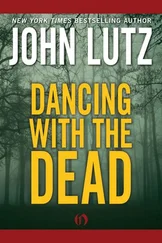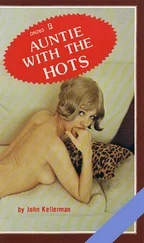John Wohlstetter - Sleepwalking with the Bomb
Здесь есть возможность читать онлайн «John Wohlstetter - Sleepwalking with the Bomb» весь текст электронной книги совершенно бесплатно (целиком полную версию без сокращений). В некоторых случаях можно слушать аудио, скачать через торрент в формате fb2 и присутствует краткое содержание. Город: Seattle, Год выпуска: 2012, ISBN: 2012, Издательство: Discovery Institute Press, Жанр: История, military, Политика, Публицистика, на английском языке. Описание произведения, (предисловие) а так же отзывы посетителей доступны на портале библиотеки ЛибКат.
- Название:Sleepwalking with the Bomb
- Автор:
- Издательство:Discovery Institute Press
- Жанр:
- Год:2012
- Город:Seattle
- ISBN:978-1-93659-906-6
- Рейтинг книги:3 / 5. Голосов: 1
-
Избранное:Добавить в избранное
- Отзывы:
-
Ваша оценка:
- 60
- 1
- 2
- 3
- 4
- 5
Sleepwalking with the Bomb: краткое содержание, описание и аннотация
Предлагаем к чтению аннотацию, описание, краткое содержание или предисловие (зависит от того, что написал сам автор книги «Sleepwalking with the Bomb»). Если вы не нашли необходимую информацию о книге — напишите в комментариях, мы постараемся отыскать её.
RICHARD PERLE, Resident Fellow, American Enterprise Institute and Assistant Secretary of Defense, 1981–1987 Sleepwalking with the Bomb
Sleepwalking with the Bomb — читать онлайн бесплатно полную книгу (весь текст) целиком
Ниже представлен текст книги, разбитый по страницам. Система сохранения места последней прочитанной страницы, позволяет с удобством читать онлайн бесплатно книгу «Sleepwalking with the Bomb», без необходимости каждый раз заново искать на чём Вы остановились. Поставьте закладку, и сможете в любой момент перейти на страницу, на которой закончили чтение.
Интервал:
Закладка:
But such predictions proved mainly wrong. As noted earlier Andrei Sakharov, the father of the Soviet H-bomb, made clear in his memoirs that Joseph Stalin would have gone ahead with his nuclear program—having already gotten the secrets well before the July Trinity test—even if America did not. In 1946 America did offer to give up its small nuclear arsenal to international control by the United Nations. But Stalin rejected the proposal in 1948—even before the first Soviet atomic bomb was tested. On the fair evidence of it, nothing like the future envisioned by Szilard and his fellow signatories came to pass.
Public support for America was strong in many allied countries. The captive peoples enslaved by the Soviet Union regarded America as the “last, best hope on earth,” in Abraham Lincoln’s famous words. Thus Soviet dissident Natan Sharansky, released in 1986, reported that he and fellow prisoners had been thrilled to hear President Reagan use phrases like “locus of evil” and “evil empire” in describing the USSR, because they told them America would not give up. The people of Eastern Europe were then and remain today among America’s finest friends on the planet.
But the public, as well as prominent public figures, were galvanized by the bombings. In 1949 Indian Prime Minster Jawaharlal Nehru said his countrymen “exulted” at not having the bomb, which he called “the symbol of incarnate evil.” (Despite this, Nehru enrolled India in the Atoms for Peace program, putting in his country’s hand the material to make nuclear bombs, as his successors were to do.)
Nehru’s phrase—as opposed to Reagan’s—calls to mind an enduring difference between disarmament advocates and skeptics: Advocates ascribe evil to inanimate, weaponized objects, drawing no moral distinction between civilized and uncivilized leaders possessing such weapons. Skeptics ascribe evil to human actors and argue that it makes a huge difference which country has the bomb. The latter view is more credible. During the Cold War, most Americans were worried about Russia’s arsenal, while few were worried about Britain’s. Today many more Americans fear an Iranian bomb, while few fear a nuclear Israel. The Arab states agree, as WikiLeaks cables showed.
The “Ban the Bomb!” movement gathered real steam when in 1954 the U.S. conducted its Castle Bravo H-bomb test, whose 15 megatons released three times the total energy released by all bombs dropped during World War II. In fact, the test was designed to yield five megatons, but a subtle error in calculation caused the vast underestimate. It was discovered before the test, but the message did not reach the test site in time. The permanent atmospheric test ban finally enacted in 1963 was the culmination of public alarm in the wake of Castle Bravo. The vast majority of citizens opposing the bomb were patriotic people who feared the destruction atomic war would bring. It was a perfectly reasonable fear, and one shared by those who supported the bomb programs as necessary. (Not everyone protested. In the late 1950s Las Vegas hotels ran bus tours to viewing vantage points for atomic tests. Viewers could sip “atomic cocktails” but were warned to protect their eyes, lest their macabre fascination prove injurious.)
Popular protests bore fruit in 1958: in March, the Soviet Union announced a moratorium on nuclear testing, and five months later President Eisenhower declared a U.S. moratorium to begin at the end of October. France—not a signatory to the treaty ban—ignored the super-power moratorium and tested in the atmosphere after the 1963 ban, as did China.
The Bomb to End All Bombs
THEN, IN September 1961, the Soviets ended their three-and-a-half-year hiatus. They began a series of tests, culminating in the largest man-made nuclear explosion ever, the Tsar Bomba, tested in the Arctic Ocean archipelago of Novaya Zemlya. [46] Manhattan Project physicist Hans Bethe opined at the time that the Soviets must have begun their extensive preparations by March 1961, just as the Geneva test ban talks resumed. Half a year before they announced it, the Soviets already had begun planning to end their moratorium.
The 1961 Tsar Bomba test yielded 50 megatons, equal to a magnitude 7 earthquake like the one that devastated Haiti in 2010. It released one-quarter the explosive force of the 1883 Krakatoa island eruption that created a 135-foot tsunami, sent a huge layer of dust around the world, and was heard thousands of miles away. The 27-ton monster bomb created a fireball that reached almost as high as the 6.5-mile altitude from which the Russian TU-95 bomber dropped it, and generated a mushroom cloud that rose 40 miles, seven times the height of Mount Everest. Because it detonated at 12,000 feet, far too low for a bomb this size, it hurled highly radioactive debris that spread all over the globe via jet-stream winds. [47] A rule of thumb for blast effect: each ton of nuclear yield vaporizes one ton of debris at ground level. Because the Tsar Bomba’s 50-megaton blast was an airburst, but too low, it vaporized earth at ground zero. A pure ground-level Tsar Bomba burst would have thrown skyward 50 million tons of debris. (The U.S. Air Force nixed a Strategic Air Command request for a 60-megaton H-bomb; in the event, President Eisenhower refused to allow an atmospheric test in the Pacific.) Far-flung radiation effects began with the 1945 Trinity test, which transmuted cerium-140 (a stable rare-earth element of the soil in the western continental U.S.) into intensely radioactive cerium-141. Winds carried it across the United States, where it ruined film at the Eastman Kodak factory in Rochester, New York. Another odd example: on May 25, 1953, a shell from the Army’s atomic cannon exploded in the Nevada desert with a 15-kiloton yield (slightly greater than the Hiroshima bomb), sending a radioactive cloud east that contaminated hail falling in a thunderstorm over Washington, D.C.
The radius of total destruction was 34 miles, the third-degree burn radius was over 60 miles, the blast shock wave reached 430 miles, and windows broke as far away as Norway and Finland, over 600 miles away.
The bomb’s energy was 97 percent fusion energy, which does not produce the poisonous radioactive by-products that fission does—only the 3 percent from the fission first-stage A-bomb trigger (which ignited the fusion H-bomb “secondary” stage) released radioactivity. The Soviet bomb designers could have used fission boosting—surrounding the fissile plutonium core with uranium-238 as a fissionable third stage, as originally planned. Instead they used a tamper of nonfissionable lead. A 3-stage bomb would have yielded 100 megatons, and all the extra energy release would have sent vast quantities of highly toxic by-products into the atmosphere to circle the globe. But Sakharov convinced Khrushchev that a 100-megaton blast would increase total radiation in the atmosphere by 25 percent over that released by all previous tests combined.
The Tsar Bomba, even at 50 megatons, was in fact not a deliverable weapon—it was far too large to fit in any bomber’s bomb bay. It was suspended underneath the plane’s fuselage and dropped with a parachute that slowed its descent, so that the lumbering TU-95—whose top speed is roughly that of civilian airliners—could get far enough away to withstand the severe blast shock wave and intense heat.
The largest deliverable weapons known to have been deployed were 25-megaton warheads (deployed by both superpowers). We do not know for sure the largest remaining from the Soviet arsenal, but there are few U.S. weapons today with yields above one megaton. Yet a one-megaton weapon is 70 times as powerful as the Hiroshima uranium bomb and 50 times as powerful as the Nagasaki plutonium bomb. (The largest A-bomb ever detonated was a 500-kiloton U.S. A-test.) Britain, France, and China have tested in the megaton range. Israel is believed to have such an H-bomb capability, and Pakistan reportedly is working on it.
Читать дальшеИнтервал:
Закладка:
Похожие книги на «Sleepwalking with the Bomb»
Представляем Вашему вниманию похожие книги на «Sleepwalking with the Bomb» списком для выбора. Мы отобрали схожую по названию и смыслу литературу в надежде предоставить читателям больше вариантов отыскать новые, интересные, ещё непрочитанные произведения.
Обсуждение, отзывы о книге «Sleepwalking with the Bomb» и просто собственные мнения читателей. Оставьте ваши комментарии, напишите, что Вы думаете о произведении, его смысле или главных героях. Укажите что конкретно понравилось, а что нет, и почему Вы так считаете.












